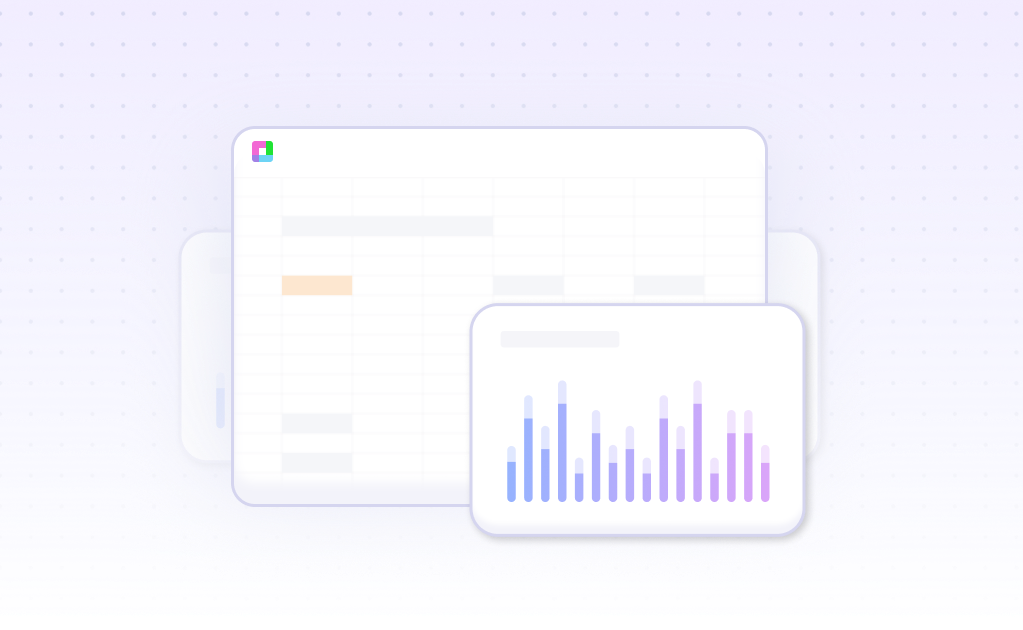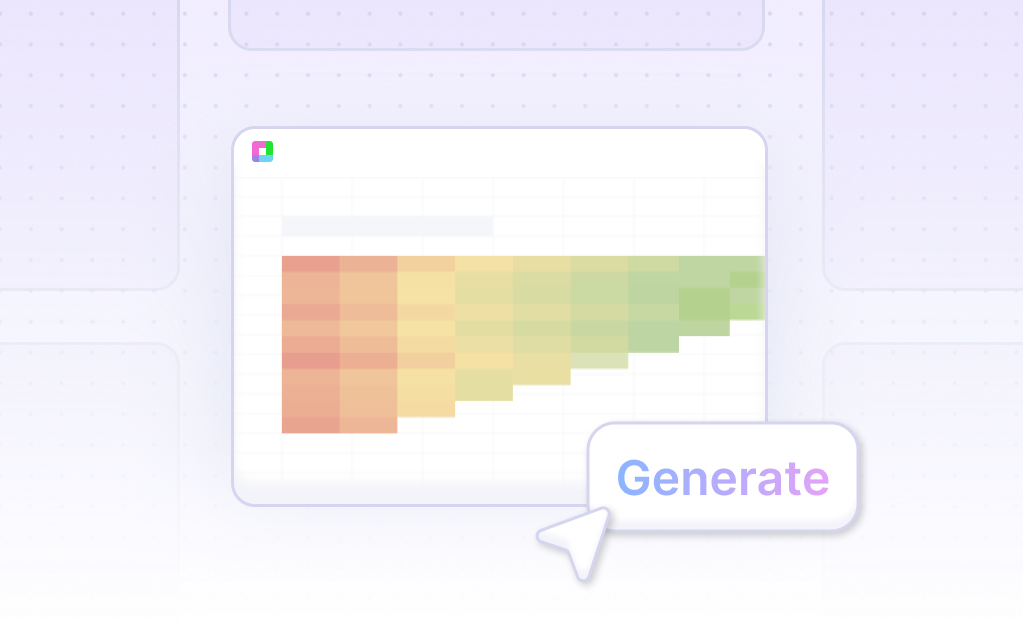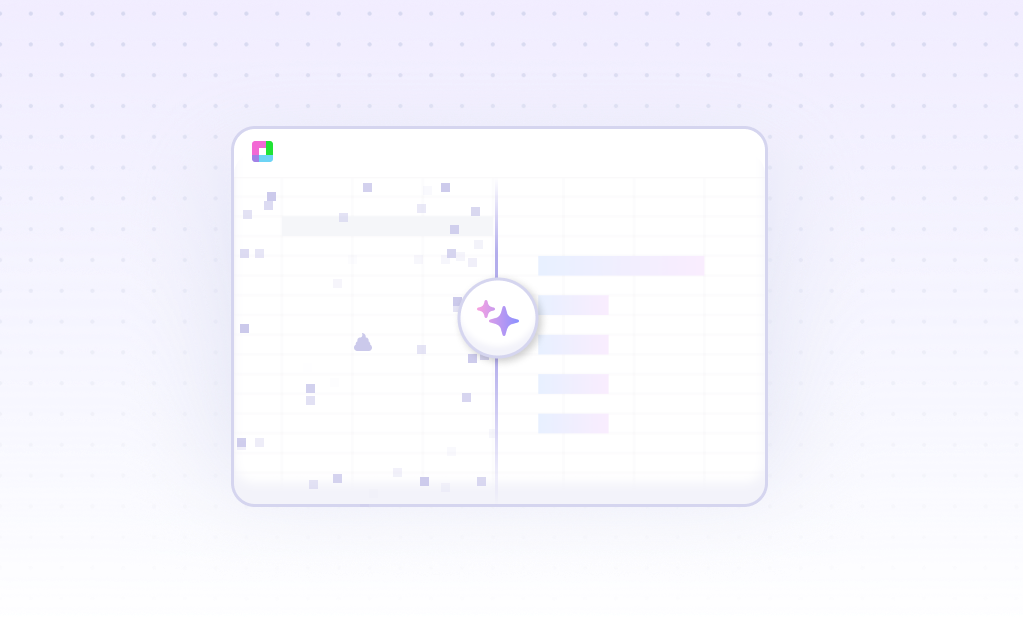
Introduction
Creating a Box & Whisker Chart helps in statistical analysis by showing the distribution of data. While traditional spreadsheet programs like Excel or Google Sheets can generate these charts, they often require manual setup and adjustments.
Sourcetable simplifies this process with its AI-powered spreadsheet capabilities. Its AI spreadsheet assistant can efficiently guide users through creating Box & Whisker Charts, as well as other templates, charts, and graphs. This makes it accessible even to those who are not spreadsheet power users.
To experience the ease of generating a Box & Whisker Chart with Sourcetable, sign up now or continue reading for a detailed guide on using both AI and traditional methods. Sign up here to generate your first Box & Whisker Chart with Sourcetable.
What is a Box & Whisker Chart?
A box and whisker chart is a graphical tool that summarizes a set of data through its distribution shape. It efficiently handles large data sets and provides a clear summary of numerical data. This chart type can be displayed both horizontally and vertically.
Key Components
The chart visually represents data quartiles and extremes using a five-number summary: minimum score, first (lower) quartile, median, third (upper) quartile, and maximum score. The median, shown by a line splitting the box in two, captures the average value.
Data Distribution and Skewness
Box and whisker charts display the middle 50% of scores, highlighting the range between the 25th and 75th percentiles. They also show the dispersion and skewness of a dataset, making it easier to understand the data’s spread.
Outliers and Comparisons
This chart type highlights outliers within the data, allowing for quick identification of anomalous points. Additionally, multiple box and whisker plots can be drawn on one graph, facilitating comparisons between different data sets. This feature is useful for comparing distributions across categories.
When to Use a Box & Whisker Chart
Ideal Use Cases
A Box & Whisker Chart is ideal for displaying the distribution of a dataset. It effectively highlights the median, quartiles, and potential outliers within a set of data. This type of chart is particularly useful in comparing distributions across different groups or categories.
Advantages
The main advantage of a Box & Whisker Chart is its ability to summarize a large amount of data visually and concisely. It clearly shows the central tendency, variability, and symmetry of the data. This makes it easier to spot outliers and understand the overall spread of the data.
Disadvantages
One disadvantage is that a Box & Whisker Chart does not provide detailed information about the distribution shape beyond the quartiles. This can be a limitation if more in-depth statistical analysis is required. Additionally, it may be less intuitive for those unfamiliar with statistical concepts.
Comparison with Other Charts
Compared to a histogram, a Box & Whisker Chart is more compact and less detailed but better for comparing multiple datasets. Histograms show the frequency of data points in bins but can be less effective for comparisons. Compared to line charts, Box & Whisker Charts are better at showing statistical summaries rather than trends over time.
How to Generate a Box & Whisker Chart with Sourcetable
- Creating a Box & Whisker Chart in Sourcetable, an AI spreadsheet, is straightforward and efficient. While manual methods like Excel or Google Sheets are available, using Sourcetable AI is the simplest option.
- Start by generating sample data using Sourcetable's AI assistant or upload a CSV file. This forms the basis for your Box & Whisker Chart. Next, select the data range you wish to visualize. This sets your parameters for the chart.
- Invoke the AI assistant to generate the Box & Whisker Chart. This step automates the process, ensuring quick and accurate results. Lastly, refine your Box & Whisker Chart using the AI assistant. Specify changes to formatting, labels, and other elements to tailor the chart to your needs.
- Using Sourcetable AI for your Box & Whisker Chart saves time and enhances precision, allowing for easy iteration and customization.
How to Generate a Box & Whisker Chart in Excel and Google Sheets
Creating a Box & Whisker Chart in Excel
To create a Box & Whisker Chart in Excel, start by selecting your data. You can select a single data series or multiple series. In Excel, navigate to Insert, then click Insert Statistic Chart and choose Box and Whisker. This will generate a basic chart.
For customization, right-click one of the boxes on the chart and select Format Data Series from the shortcut menu. The Format Data Series pane will appear, allowing you to make necessary adjustments. This process highlights the mean, quartiles, and outliers of your dataset effectively, making it a valuable tool for statistical analysis.
Creating a Box & Whisker Chart in Google Sheets
In Google Sheets, Box & Whisker Charts require thorough data preparation. Ensure your data includes minimum, lower quartile, median, upper quartile, and maximum values, arranged neatly in columns. Use functions such as =min(A2:A11), =quartile(A2:A11,1), =quartile(A2:A11,3), and =max(A2:A11) to compute the necessary statistics and enter them in the appropriate cells.
Once your data is prepared, go to Insert and choose Chart, then change the chart type to Candlestick Chart. This visual representation helps in understanding and comparing data distributions effectively.
Benefits of Box & Whisker Charts
Box & Whisker Charts provide a clear graphical representation of statistical data. They showcase the minimum, first quartile, median, third quartile, and maximum values, visualizing data distribution. This makes it easier to understand and compare different datasets, particularly useful in fields like medical trials and educational assessments.
Use Cases Unlocked by Visualizing Data Using a Box & Whisker Chart
Identifying Outliers |
Box & Whisker Charts are ideal for identifying outliers in a dataset. They clearly highlight data points that fall significantly outside the typical range, helping analysts quickly pinpoint anomalies. |
Comparing Distributions |
Box & Whisker Charts facilitate the comparison of data distributions across different categories. By displaying medians, quartiles, and ranges, these charts enable direct visual comparison of variability and central tendency between groups. |
Understanding Dispersion |
Visualizing data with Box & Whisker Charts provides insights into data dispersion. The length of the box and whiskers shows the spread of the data, making it easier to understand the variability within the dataset. |
Assessing Symmetry |
Assess symmetry in data distribution using Box & Whisker Charts. By comparing the median line within the box and the lengths of the whiskers, one can quickly determine if the data is symmetrically distributed or skewed. |
Analyzing The Impact of Changes |
Analyze the impact of changes over time or between conditions with Box & Whisker Charts. These charts help visualize shifts in medians and overall distribution, clarifying the effects of different variables. |
Highlighting Subgroup Variability |
Box & Whisker Charts are effective for highlighting variability within subgroups. Multiple boxes in one chart provide a visual representation of differences within smaller sections of a larger dataset. |
Summarizing Large Datasets |
Summarize large datasets efficiently with Box & Whisker Charts. Key statistical measures such as medians, quartiles, and ranges are represented visually, allowing for quick interpretation without detailed numerical analysis. |
Frequently Asked Questions
What data does a box and whisker chart show?
A box and whisker chart shows the distribution of numerical data in quartiles, highlighting the mean, outliers, and skewness.
How is a box and whisker chart constructed?
A box and whisker chart is based on minimum and maximum values, the upper and lower quartiles, and the median. It also includes whiskers that indicate variability outside the upper and lower quartiles.
For what purposes can a box and whisker chart be used?
Box and whisker charts can be used to compare distributions between categories or samples, such as test scores of two classes, life spans of light bulbs, or results of medical trials.
What are some benefits of using a box and whisker chart?
Box and whisker plots are good for showing the distribution of data across a measure, where the majority of data points fall, and for comparing distributions between categories.
How should a box and whisker chart be drawn?
Box and whisker plots must always be drawn accurately to scale to ensure correct data representation.
Conclusion
Throughout this guide, we've explored what a Box & Whisker Chart is, highlighting its importance in statistical analysis. We detailed the process of creating this chart using AI-driven tools like Sourcetable, as well as traditional methods in Excel and Google Sheets. This well-rounded approach provides options for users of varying skill levels and preferences.
Sourcetable simplifies the creation of Box & Whisker Charts through its AI spreadsheet assistant. This powerful tool facilitates rapid and accurate chart creation, making it accessible for beginners and efficient for seasoned users. Transitioning from traditional spreadsheet programs to Sourcetable can vastly enhance your data visualization capabilities.
To experience firsthand the ease of generating Box & Whisker Charts with the help of AI, sign up for Sourcetable today and start optimizing your data analysis process.
Recommended Guides
Connect your most-used data sources and tools to Sourcetable for seamless analysis.
Frequently Asked Questions
If you question is not covered here, you can contact our team.
Contact Us





